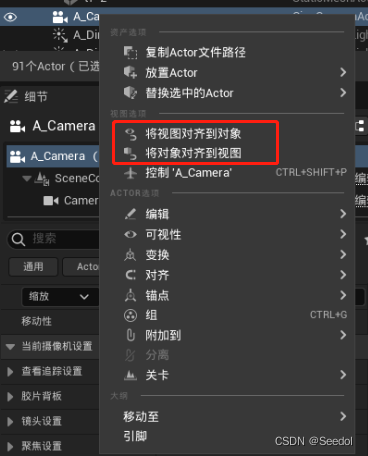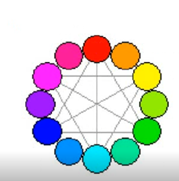【定语从句】
一、基本概念:
在复合句中,修饰某一名词或代词的从句叫定语从句。如:
Do you know theman who spoke at the meeting just now?
That is the housewhere he lived ten years ago.
定语从句所修饰的词叫先行词;定语从句一般用关系代词或关系副词来引导,关系词放在先行词与定语从句之间起连接作用,同时又作从句中的一个成分。
引导定语从句的关系代词有:that, who, whom, whose, which; 关系副词有:when, where, why.
二、关系词的用法:
(一)关系代词的用法:
1.作主语用who,which和that, 如:
He is the manwho/that lives next door.
The trainwhich/that has just left is for Shenzhen.
2.作宾语用whom,who, which, that, 如:
The man(whom/who/that) we have just seen is a famous writer.
Where is the book(which/that) I bought last week?
注:在非正式文体中,用于指人的关系代词who whom, that 通常可以省略,但在正式文体中通常用whom, 不可省略;用于指物的关系代词which和that 在非正式文体中也通常省略,但在正式文体中一般不省略。
3.作定语用whose,如:
(a) He is the manwhose car was stolen last week.
(b) It was ameeting whose importance I did not realize at that time.
注:“whose +名词中心词”这一结构在定语从句中既能作主语(如上a句),又能作宾语(如上b句)。whose 的先行词常用来指人,但有时也可以用来指具体事物或抽象概念,这时可以与of which 结构互换,词序是:“名词+of which”,如:
They came to ahouse whose back wall had broken down.. (= the back wall of which)
He’s written abook the name of which I’ve completely forgotten. (= whose name)
4.作表语只用that,它既可以指人,也可以指物,但时常省略。如:
He is no longerthe man that he used to be.
This is no longerthe dirty place (that) it used to be.
(二)关系副词的用法:
1.when 指时间,在从句中作时间状语,它的先行词通常有:time, day, morning, night, week,year 等。如:
I still rememberthe time when I first became a college student.
Do you know thedate when Lincoln was born?
注:when时常可以省略,特别是在某些句型和某些时间状语中。如:
Each time he came,he did his best to help us.
But help neverstopped coming from the day she fell ill.
2.where指地点,在从句中作地点状语。它的先行词通常有:place, spot, street, house, room,city, town, country等,如:
This is the hotelwhere they are staying.
I forget the housewhere the Smiths lived.
注:where有时也可以省略。如:
This is the place(where) we met yesterday.
3.why指原因或理由,它的先行词只有reason。如:
That is the reasonwhy he is leaving so soon.
注:why时常也可以省略。如:
That is the realreason he did it.
(三) 使用关系副词应注意下列几点:
1.这三个关系副词在意义上都相当于一定的介词+which结构:
when =on (in, at, during…) + which;
where =in (at, on…) + which;
why =for which. 如:
I was in Beijingon the day when (=on which) he arrived.
The office where(=in which) he works is on the third floor.
This is the chiefreason why (=for which) we did it.
2.当先行词是表时间的time, day等和表地点的place, house等时,一定要注意分析从句的结构,如果缺少主语或宾语时,关系词应该用which或that, 缺少时间状语或地点状语时,才能用when或where,试比较:
I’ll never forgetthe day when my hometown was liberated.
I’ll never forgetthe days which/that we spent together last summer.
His father worksin a factory where radio parts are made.
His father worksin a factory which/that makes radio parts.
3.when和where既可以引导限制性定语从句,也可以引导非限制性定语从句。而why 只能引导限制性定语从句。
三.限制性定语从句与非限制性定语从句
1.限制性定语从句说明先行词的情况,对先行词起限定作用,与先行词关系十分密切,不可用逗号隔开,也不可省略,否则全句意义就不完整。如:
This is thetelegram which he refers to.
Is there anything(that) I can do for you?
2.非限制性定语从句只是对先行词作补充说明,没有限定作用,它与先行词的关系比较松散,因而不是关键性的,如果省略,原句的意义仍然完整。这种从句在朗读时要有停顿,在文字中通常用逗号与主句隔开。如:
This note was leftby Tom, who was here a moment ago.
As a boy, he wasalways making things, most of which were electric.
引导非限制性定语从句的关系词有:who, whom, whose, which, when 和 where,不可以用that和why。
另外,非限制性定语从句从意义上讲,相当于一个并列句,在口语中使用并不普遍,在日常生活中,人们通常用并列句或简单句来表达。如:
I told the storyto John, who later did it to his brother.
= I told the storyto John, and he later told it to his brother.
Yesterday Ihappened to see John, who was eager to have a talk with you.
= Yesterday Ihappened to see John and he was eager to have a talk with you.
3.两种定语从句的内涵不同,限制性定语从句具有涉他性,而非限制性定语从句具有 唯一性,这在理解和翻译时应特别注意。试比较:
All the booksthere, which have beautiful pictures in them, were written by him.
All the booksthere that have beautiful pictures in them were written by him.
His brother, whois eighteen years old, is a PLA man. (只有一个)
His brother who isa PLA man is eighteen years old. (不止一个)
4.有时,非限制性定语从句所修饰的不是某一个词,而是整个主句或是主句中的一个部分,这时一般采用which或as来引导。如:
He passed theexam, which/as he hoped he would.
注:(1)as引导的从句可以放在主句之前,而which引导的从句只能放在主句之后。
They are hollow,which makes them very light.
As is known toall, Taiwan is a part of China.
(2)从意义上讲,which指前面主句的内容;而as指代的是作为一般人都知道的常
识性的东西,因此常译成“就象… …那样”。
(3)如果定语从句的内容对主句的内容起消极作用,则用which,而不用as,如:
She stole herfriend’s money, which was disgraceful.
He tore up myphoto, which upset me.
5.在正式文体中,以the way为先行词的限制性定语从句通常以in which或 that 引导,如:
The way in whichyou answered the questions was admirable.
但在非正式文体中,人们通常省略in which或 that :
The way (in which)he spoke to us was suspicious.
I don’t like theway (that) you laugh at her.
四.关系词的选择
1.在非限制性定语从句中,关系代词作主语,只能用who 指人,which指物;关系代词做宾语,常用whom(口语中有时用who)指人,which指物,它们都不能用that代替。
2.关系代词作介词宾语,不论是在限制性定语从句中,还是在非限制性定语从句中,当介词前置时,只能用whom指人,which指物;但如果介词后置,则不受这种限制,关系代词还可以省去,特别是在口语中。如:
Do you know theboy to whom she was talking?
Do you know theboy (that) she was talking to?
The pencil(which/that) he was writing with suddenly broke.
3.在限制性定语从句中,当先行词指物时,关系词可用which或that,二者常可以互换;但在下列情况中,只能用that,不用which:
(1)当先行词是all, a lot, (a) little, few, much, none,anything, something, everything, nothing等词时。如:
All that can bedone has been done.
In this factory Isaw little / much that was different from ours.
(2)当先行词被all, any no, much, little, few, every等限定词所修饰时。如:
We heard clearlyevery word that he said.
(3)当先行词是序数词或被序数词所修饰时。如:
The first thingthat should be done is to get the tickets.
When people talkabout Hangzhou, the first that comes to mind is the West Lake.
(4)当先行词是形容词最高级或被形容词最高级所修饰,以及先行词被序数词和形容
词最高级同时修饰时,如:
Is that the bestthat you can do?
That’s the mostexpensive hotel that we’ve ever stayed in.
This novel is thesecond best one that I have ever read.
(5) 当先行词被 the very, the only, the next, the last等所修饰时。如:
This is the verybook that I want to find.
(6) 当先行词为指人和指物的两个并列名词词组时。如:
The guests spokehighly of the children and their performances that they saw at the Children’sPalace.
She described inher compositions the people and places that impressed her most.
(7) 当主句是以which开头的特殊疑问句时。如:
Which is the carthat killed the boy?
4. 在限制性定语从句中,当先行词指人时,关系词可用who(m)或that,二者常可互换。
但在下列情况中,用who(m),而不用that:
(1) 当先行词是one, ones, any, few, anyone, anybody, someone,somebody, everyone, everybody等词时。如:
Is there anyonewho can answer this question?
He was among thefew who managed to live through the enemy prison camp.
注:在非正式文体中可以说:You’re the one that knows where to go.)
(2) 当先行词是he, they, those, people, person等词时。如:
He who wants tocatch fish just not mind getting wet.
Those who areagainst the proposal put up your hands.
注:在固定结构的谚语或习语中,可用he that…如:
He that promisestoo much means nothing.
(3) 当先行词有较长的后置定语修饰时。如:
Do you know thewriter in blue with thick glasses who is speaking at the meeting?
(4) 在分隔式定语从句中,若先行词指人,为了明确修饰关系,应当用who(m)。如:
A new master willcame tomorrow who will teach you German.
There’s only onestudent in the school who/whom I wanted to see.
I was the onlyperson in my office who was invited.
(5) 两个定语从句同时修饰一个指人的先行词,第二个定语从句常用who(m)来引导,如:
She is the onlygirl I know who can play the guitar.
5. 在限制性定语从句中,当先行词指人时,在下列情况中,一般用关系词that:
(1) 当主句是以who或which开头的特殊疑问句时。如:
Who is the manthat is reading the newspaper over there?
Which of us thatknows anything does not know this?
(2) 当先行词被形容词最高级或序数词所修饰时。如:
He is the greatestman that has ever lived.
(3) 当先行词被the only, the very, the last等词所修饰时。如:
She is the onlyperson that understands me.
6. 当先行词被the same所修饰时,关系词既可以用as,也可以用that。在表示具体事物时,有时两者有一定的区别。一般说来,表示同一种类多用as,表示同一事物多用that。如:
This is the sameinstrument that I used yesterday. 这就是我昨天用过的那台仪器。
This is the sameinstrument as I used yesterday. 这台仪器跟我昨天用过的那台一样。
在抽象概念上,同种类和同一事物是没有绝对区别的,所以两个词可换用:
I have the sameopinion as / that you have.
这里要注意的是:
(1) 使用as时,它引导的定语从句中的动词可以省略,但使用that时,定语从句中
的动词不可省略。如:
Women received thesame pay as men.
Women received thesame pay that men received.
(2) 在“the same…that”结构中,that只是用来加强语气,强调“相同”。that可以省去而不改变句子原意,甚至连名词前的same也可以省去。如:
This is the sameinstrument that I used yesterday.
= This is the sameinstrument I used yesterday.
= This is theinstrument I used yesterday.
但在“the same…as”结构中,same和as都不能省略。
(3) 当“the same…that”结构中的that作为关系副词用时,不可以直接与as互换。如:
He lives in thesame building that I live.
= He lives in thesame building as / that I live in.
Shall we meet atthe same place that we last met?
= Shall we meet atthe same place that / as we last met at?
7. 当先行词前有such, so, as时,关系词应当用as。如:
A wise man seldomtalks about such things as he doesn’t understand.
He spoke in sucheasy English as everybody could understand.
At this time ofthe day, all buses and trolleys have to carry as many passengers as they can.
It is so easy abook as every schoolboy can read.
Let’s discuss suchthings as we can talk of freely.
另需注意:
This book iswritten in such easy English as beginners can understand.(定语从句)
This book iswritten in such easy English that beginners can understand.(结果状语从句)






